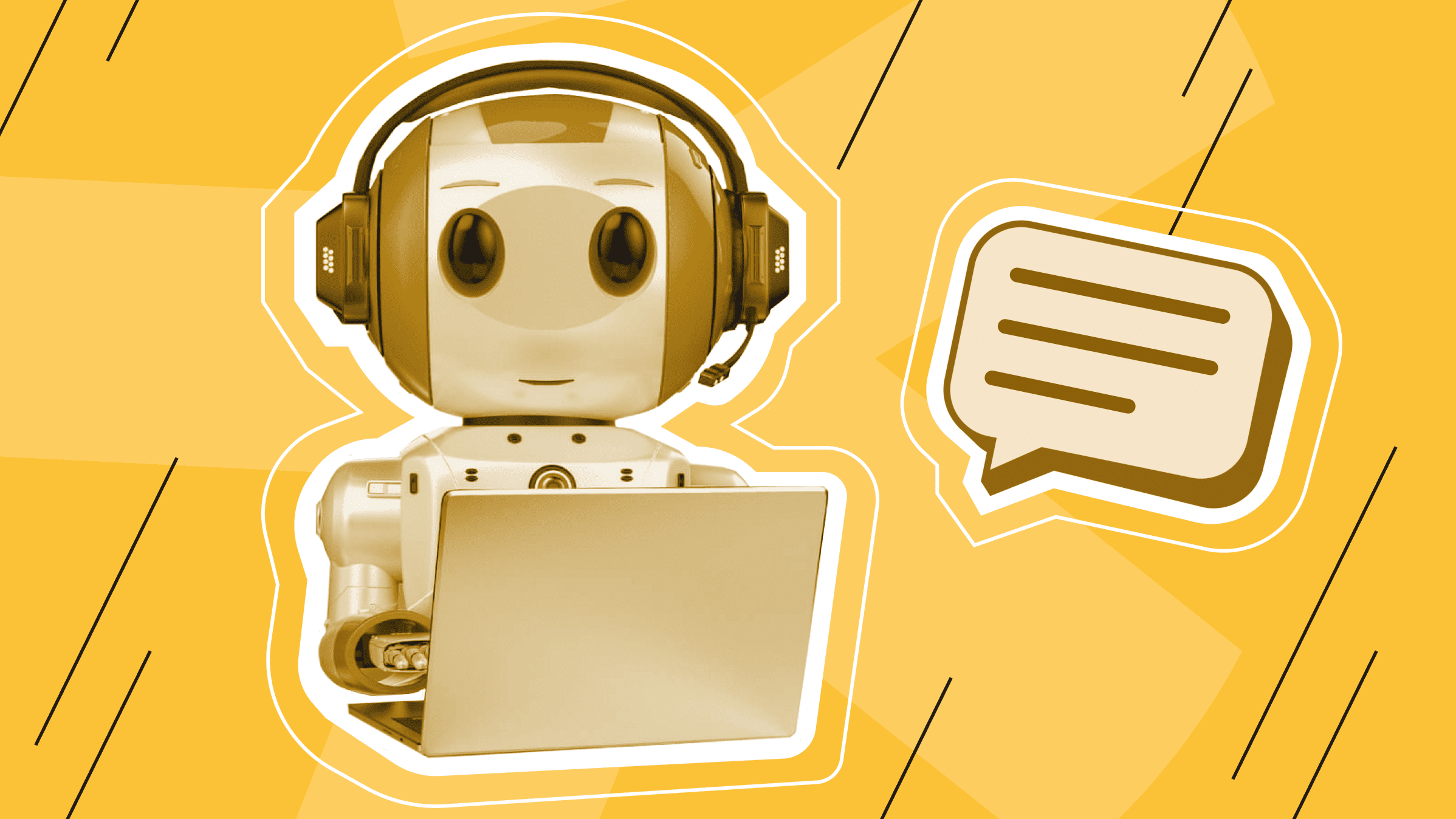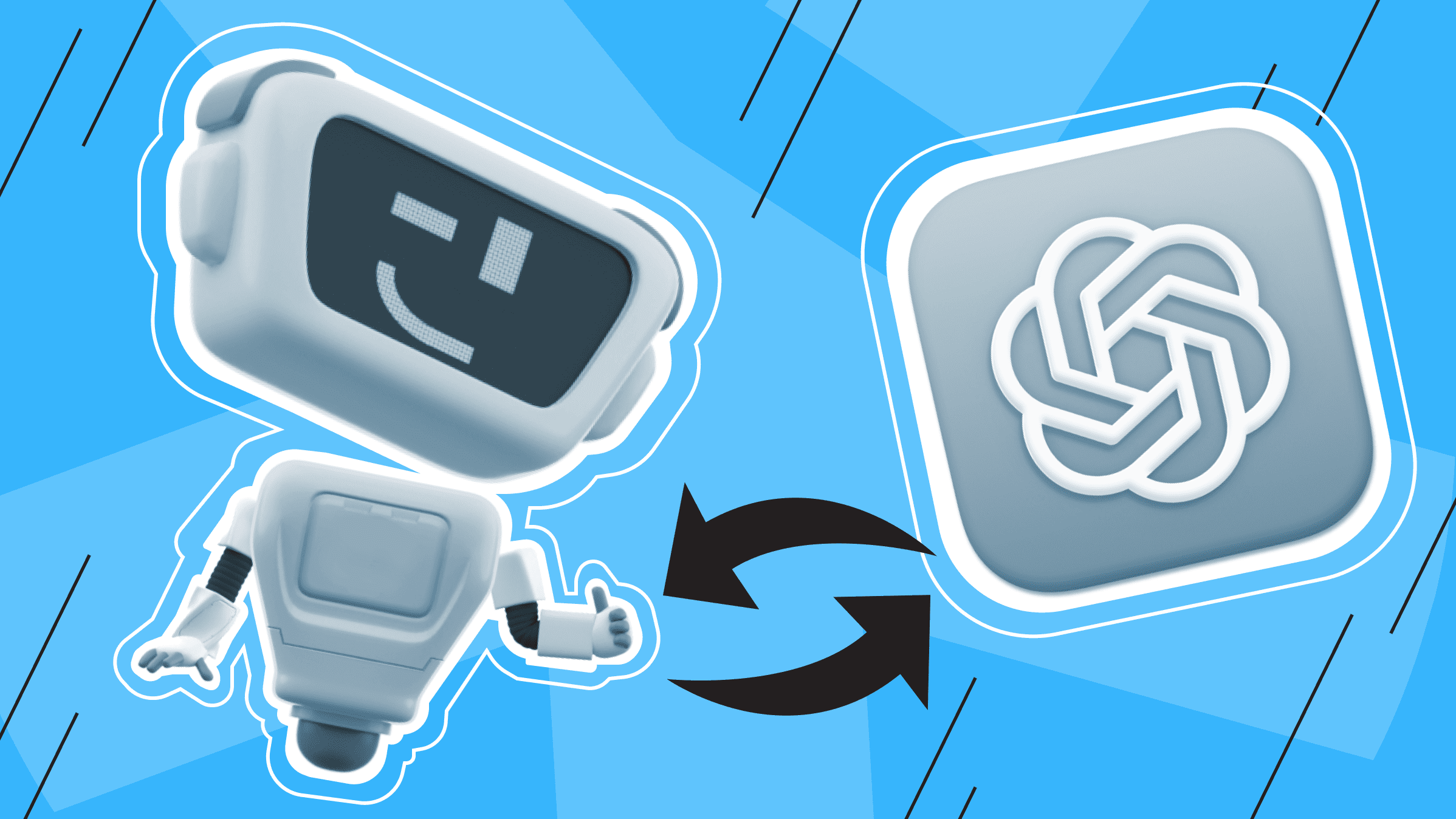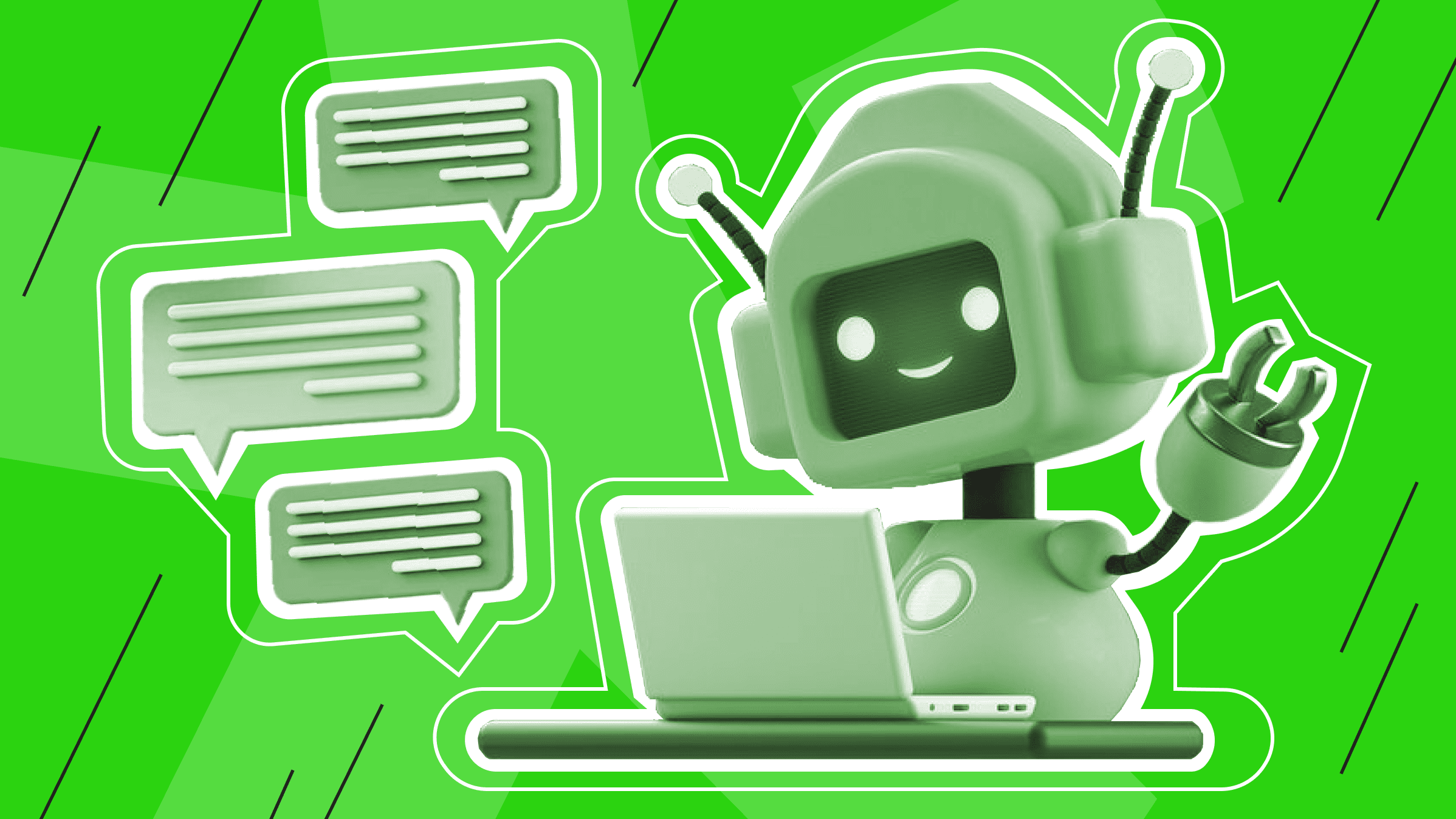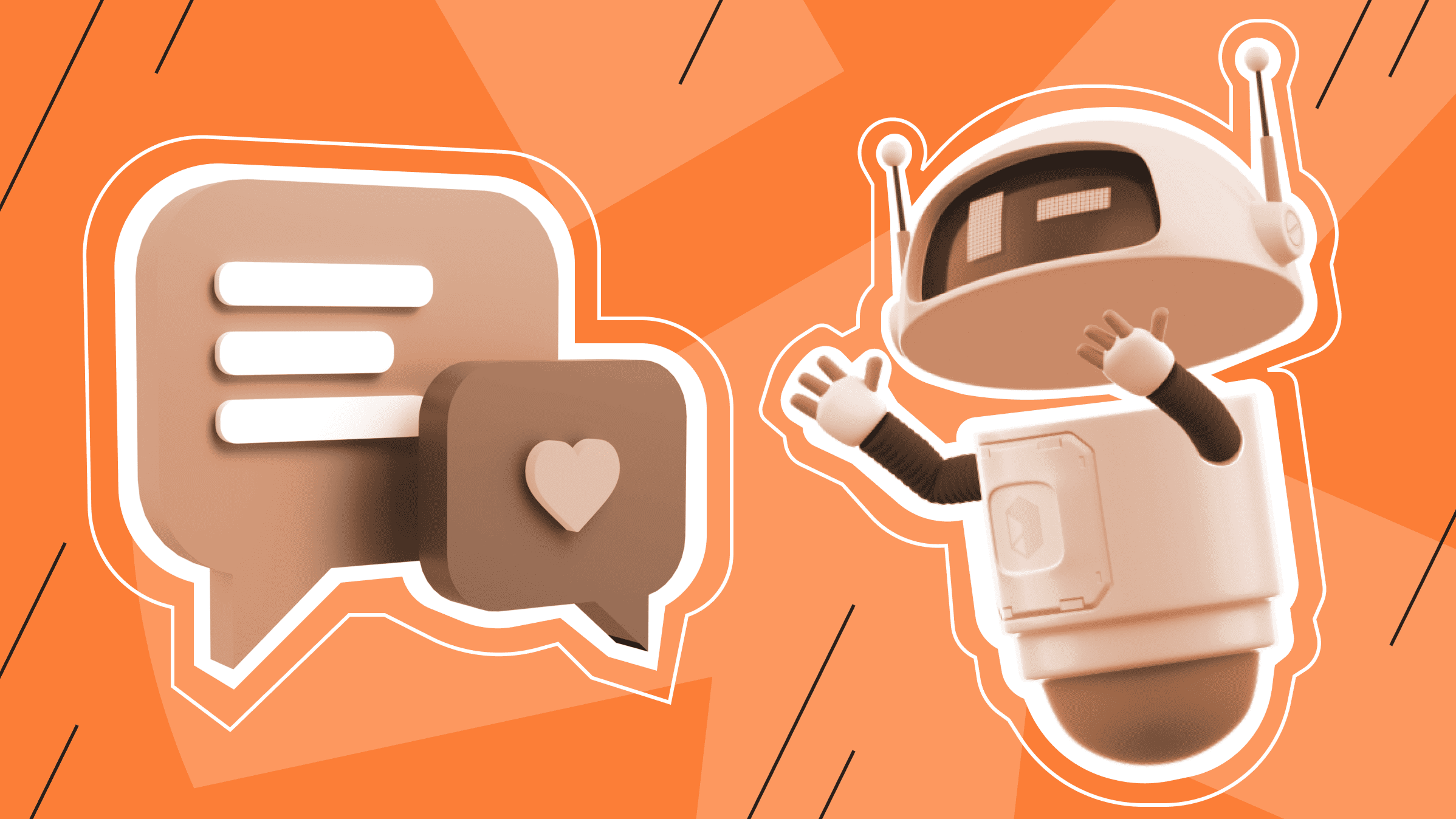
AI-based chatbots are now available to everyone and bring many benefits. Even though AI chatbots are controversial and raise ethical issues, they are increasingly becoming a great solution for automating business processes and routine tasks.
The essentials about AI chatbots
Chatbots, created based on artificial intelligence and natural language processing systems, are programs capable of simulating communication through text or speech. They allow you not only to receive the desired information but also to control the device.
What is artificial intelligence?
At its core, artificial intelligence is the modeling of human intelligence processes using computer systems. Artificial intelligence systems are designed to analyze large amounts of data, learn from patterns, make decisions, or perform tasks that typically require human intelligence. This is the foundation of the flexibility of artificial intelligence.
AI chatbots are just the tip of the iceberg of use cases of this technology. Any AI-based solution is about ingesting and processing volumes of data that an average person or group of people cannot.
For example, bringing AI into the realm of business allows you to analyze a wealth of data about product sales, seasonality, costs, costs of working with suppliers, and customer satisfaction in order to optimize pricing. Combining the Internet of Things (IoT) with artificial intelligence provides the ability to analyze equipment performance and make quick decisions about infrastructure changes.
Evolution of chatbot technology

The development of chatbots began with Alan Turing in 1950 after the publication of his article "Computing Machines and the Mind." This led to the creation of ELIZA by Joseph Weizenbaum in 1966, PARRY by Kenneth Colby in 1972, and ALICE by Richard Wallace in 1995.
A new round of chatbot development came with releasing the ALICE source code to the public and integration artificial intelligence. Over half a century has passed, and today we use tools like Siri, Alexa, Bing Chat, ChatGPT, and others.
A Review of Chatbots: Do All Chatbots Use Artificial Intelligence
Initially, chatbots used pre-prepared answers to simple requests and worked from a pre-constructed decision tree. These are rule-based chatbots and do not use artificial intelligence.
For example, button-based chatbots allow users to select an appropriate "request button" and then get a pre-prepared answer. For example, such a feature is available on Instagram, where brand accounts can automatically answer popular questions in DM.
Keyword-based chatbots work on a more complex but flexible scheme. They recognize familiar words in a customer's query and provide a pre-prepared answer. Such bots can be found in banking applications. Unfortunately, most bots give users information they already know.
AI-based chatbots eliminate the shortcomings of their predecessors and offer a completely new level of communication with online assistants. This is where machine learning comes into play, both in the development phase and when the bot communicates with users. An AI chatbot can understand context, and rather than relying on a pre-prepared script, it can mimic communication with a live person and personalize that communication. What are the drawbacks of AI chatbots? The complexity of development and high cost compared to traditional bots, as well as a low probability of predicting the outcome of a dialogue—are challenges associated with using artificial intelligence.
Fundamentals of AI chatbot development
Before building an AI chatbot, you should closely examine the aspects involved. This includes the interface, training method, and other important components that can simulate live communication.
Natural language processing (NLP) for chatbots

Natural Language Processing (NLP) is the ability of a computer to understand human speech. This sophisticated technology has many different natural language processing techniques that allow it to understand, interpret, and generate human speech meaningfully and usefully.
NLP purposes:
- Convert spoken language to written text, like Siri and Google Assistant.
- Extract meaning from a user's request, including recognizing names, places, translating speech into other languages, etc.
- Generate a relevant response. For example, generating a response from Siri or an AI chatbot.
- Classify text and identify it as belonging to a specific group, such as automatically moving emails to the spam folder.
- Analyzing the user's mood to determine the tone of communication.
- Model conversation topics by identifying them in text using LDA-style algorithms.
Computational linguistics, statistical models, machine learning, and deep learning combine to make NLP possible. These technologies are needed to work not only with ordinary language but also with metaphors, sarcasm, and other language patterns that people use every day.
The NLP Engine consists of two components:
- The intent classifier takes user input, determines its meaning, and correlates it to one of the intents supported by the chatbot.
- The entity extraction tool extracts key information from the user's request.
NLP tools include the Natural Language Toolkit (NLTK), which is based on the Python programming language. NLTK includes text processing libraries for tokenization (dividing text into words and sentences), syntactic analysis, classification, stemming (simplifying words to a basic form), tagging, etc. NLTK includes various algorithms and tools for text classification, language modeling, and other language-related machine-learning tasks and provides access to linguistic resources such as WordNet (lexical database).
Machine learning and deep learning in AI

Machine learning is the development of algorithms and models that allow systems to learn from data and improve their performance over time. In the context of AI chatbots, machine learning techniques are used to understand patterns in human language and generate meaningful responses.
Reinforcement learning can be used to fine-tune chatbot responses based on user feedback. The chatbot learns to optimize its responses by receiving positive feedback and adjusting its behavior in response to negative feedback.
Deep learning is a subset of machine learning that focuses on multi-layer neural networks (deep neural networks). Deep learning enables a chatbot to learn information from primary data sets and dialogues with users.
Deep learning models, specifically recurrent neural networks (RNNs) and transformers, are used to solve various NLP tasks. RNNs are effective for tasks involving sequence-based language generation, while transformers are excellent for tasks requiring context and attention mechanisms. For example, a chatbot can focus on parts of a textual query and provide answers related to those parts.
Generative models such as GPT (Generative Pre-trained Transformer) have revolutionized AI chatbots. These models are trained on large datasets and can generate sufficiently coherent and contextually relevant responses to make interaction with chatbots more natural and human-like.
As a result, chatbots can evolve and improve as they are used, not just during the development and training phase by their creators.
Data collection and preparation

Data collection and preparation are the most important stages in creating effective artificial intelligence chatbots. The quality and relevance of the data used directly affect a chatbot's performance and its ability to understand user input and generate meaningful responses.
For example, if you plan to create a customer service chatbot, the data can include text from emails, websites, and social networks, as well as data from customer interactions such as customer service or contact centers. In general, you can use any data sets to help you develop your chatbot in the right direction.
The following list can describe the main stages of preparation:
- Identify reliable data sources, collect the data, and use existing and new datasets.
- Annotate and label the data to indicate user intent, entities, and relevant responses. You may need to convert the data to a message-response format.
- Ensure that the data is relevant, with no duplicates or inaccuracies. Perform cleanup if necessary.
- Expand the collected data set to increase the variety and accuracy of chatbot responses.
- Split the data into multiple sets: the training set is used to train the model, the validation set helps to tune specific parameters, and the test set evaluates the model's effectiveness.
Chatbot architecture

You can choose the type of chatbot that will determine its development. In the generative model, a chatbot does not use a predefined repository but applies deep learning techniques to answer queries. A search-based chatbot has a repository of answers that it uses to solve queries.
The "search" model rarely goes wrong because it is based entirely on data analysis. However, it has its limitations, so the answers may not model natural human speech.
On the other hand, a deep learning chatbot can easily adapt its style to the customer's questions and needs. This is especially true if the chatbot also needs to keep track of what has been said in previous messages.
The key components of a conversational chatbot architecture:
- The environment (this is where the main NLP workflow takes place).
- Question and answer system (manual or automatic training is possible here).
- Plugins/Components (plugins provide API solutions for chatbots and other automation components).
- Node server/traffic server (essentially hosting for your chatbot).
- External systems (any platform for communicating with users, including Microsoft Teams, Slack, Skype, etc.).
Deployment and integration of AI chatbot

Deploying and integrating an AI chatbot means making it available to users across multiple platforms.
Selecting a platform for AI chatbot development
Bot frameworks are software development kits (SDKs) specifically designed to simplify chatbots' creation, deployment, and management. Popular frameworks include:
- Microsoft Bot Framework is an open-source bot framework built on Azure. This framework includes a complete SDK for building and managing AI bots and integrating them with popular social networks and messengers.
- Botpress is another popular open-source framework allowing you to build scalable chatbots based on its GPT engine and code-free Conversation Studio editor.
- Dialogflow - an NLP platform from Google that can be used to create artificial intelligence voice bots and chatbots.
- IBM Watson Assistant - IBM's framework with built-in artificial intelligence Watson chatbot for building enterprise chatbots for various business domains. It has a high level of natural language interpretation (NLI/NLU), which allows the software product to be precisely tailored to the target audience's needs.
- HuggingGPT is a framework for training and deploying HuggingFace large language models (LLMs). The tool uses ChatGPT to process user prompts and then plugs in additional Natural Language Processing (NLP) models to enable the multimodal execution of complex tasks.
For those who do not have a lot of code writing experience, there are other solutions available:
- Chatfuel is a platform that allows you to create chatbots for Facebook Messenger without writing any code.
- ManyChat is a popular platform for creating chatbots on Facebook Messenger and other messaging platforms without writing any code.
Chatbot Interface Design
A well-designed interface can improve user satisfaction, increase engagement, and make interaction with a chatbot more efficient.
- Develop a conversation flow that guides users through the interaction naturally and intuitively. Ensure that chatbot responses and prompts lead to meaningful follow-up actions.
- Use images, icons, and other visual elements to enhance the user experience and add context to the conversation.
- Offer users predefined options via buttons or quick replies. This streamlines interactions and simplifies information entry.
- Implement a straightforward menu or command system that users can use to access different features or additional information.
- Implement a "help" command or button that users can use to get help or guidance.
- Ensure that the chatbot interface is accessible to users with disabilities by following web accessibility guidelines.
Integration with messengers and other platforms

For example, to develop and deploy a chatbot within an enterprise structure, you can use Pandorabots, an open-source framework that allows you to create enterprise chatbots for WhatsApp, Slack, Line, and Telegram.
Most messaging platforms offer APIs (application programming interfaces) that allow you to connect a chatbot to their systems. These APIs allow the chatbot to send and receive messages, handle user interactions, and access platform-specific features.
To access the APIs, you must create a developer account on the appropriate messaging platform. Each platform may have specific requirements for message formatting, such as text, images, buttons, and quick replies. You can also configure the webhook to receive event notifications.
After testing and deploying the chatbot, regularly monitor user interactions, feedback, and performance metrics. Possible updates and enhancements will result from the increased audience.
Monitoring and analytics of chatbots
Collecting website statistics, analyzing user engagement on social media, and responding to advertising campaigns are just as important as monitoring chatbot performance across multiple metrics. Like any statistic collected and analyzed, chatbot metrics can help you make informed decisions about your chatbot's development.
Some of the key chatbot performance metrics include:
- The average duration of interaction with the bot.
- Total number of interactions (sessions).
- Total number of engaged conversations.
- Total number of unique users.
- Missed messages.
- Goal fulfillment rate.
- User satisfaction rates.
As a chatbot owner, you can also take a closer look at users (active, new, engaged, etc.), message responses from the bot (number of start messages, total number of messages in the conversation, number of requests the chatbot failed to respond to, etc.), and other chatbot insights.
For example, you can use Dashbot, a tool to track chatbot KPIs at different levels on any messaging platform, Botlytics to track the messages your bot sends and the conversations it has, and other tools. It's worth noting that not all of these tools are supported by chatbots on all platforms. There are some ways to collect analytics data only from bots running in Slack, Facebook Messenger, and others.
Future trends and applications of chatbots with artificial intelligence

As artificial intelligence continues to evolve, chatbots may reach even higher levels of human "cognition," emotional intelligence, and the ability to engage in complex dialogue with nuanced language and context. This could open up new opportunities for applications in customer service, education, and more.
An important evolution has been the development of language models such as GPT-3, which are trained on large amounts of datasets and can generate human-like speech used in various applications such as chatbots and automated content creation. This was a new round in the development and application of NLP. The advent of pre-trained language models has also simplified the process of creating new NLP systems by reducing the amount of data and the time it takes to train them. Multilingual development is also an important trend in NLP as the apps become increasingly globalized. Transfer learning enables the creation of multilingual content.
Multimodal chatbots, talking assistants use multiple interaction modalities such as text, voice, images, and video to provide convenient and versatile user interaction. They are designed to assist users with tasks ranging from simple information retrieval to complex, more comprehensive inquiries. And this is another goal because there are many artificial intelligence chatbots, but not all of them are without flaws. The open-source nature of development and the ability to try different options of chatbots can lead to the further development of AI bots and their greater adoption in healthcare systems, the financial sector, business projects, and other areas of life.
VPS
Choose the suitable configuration and enjoy all the benefits of a virtual private server.
From $4.99/mo

